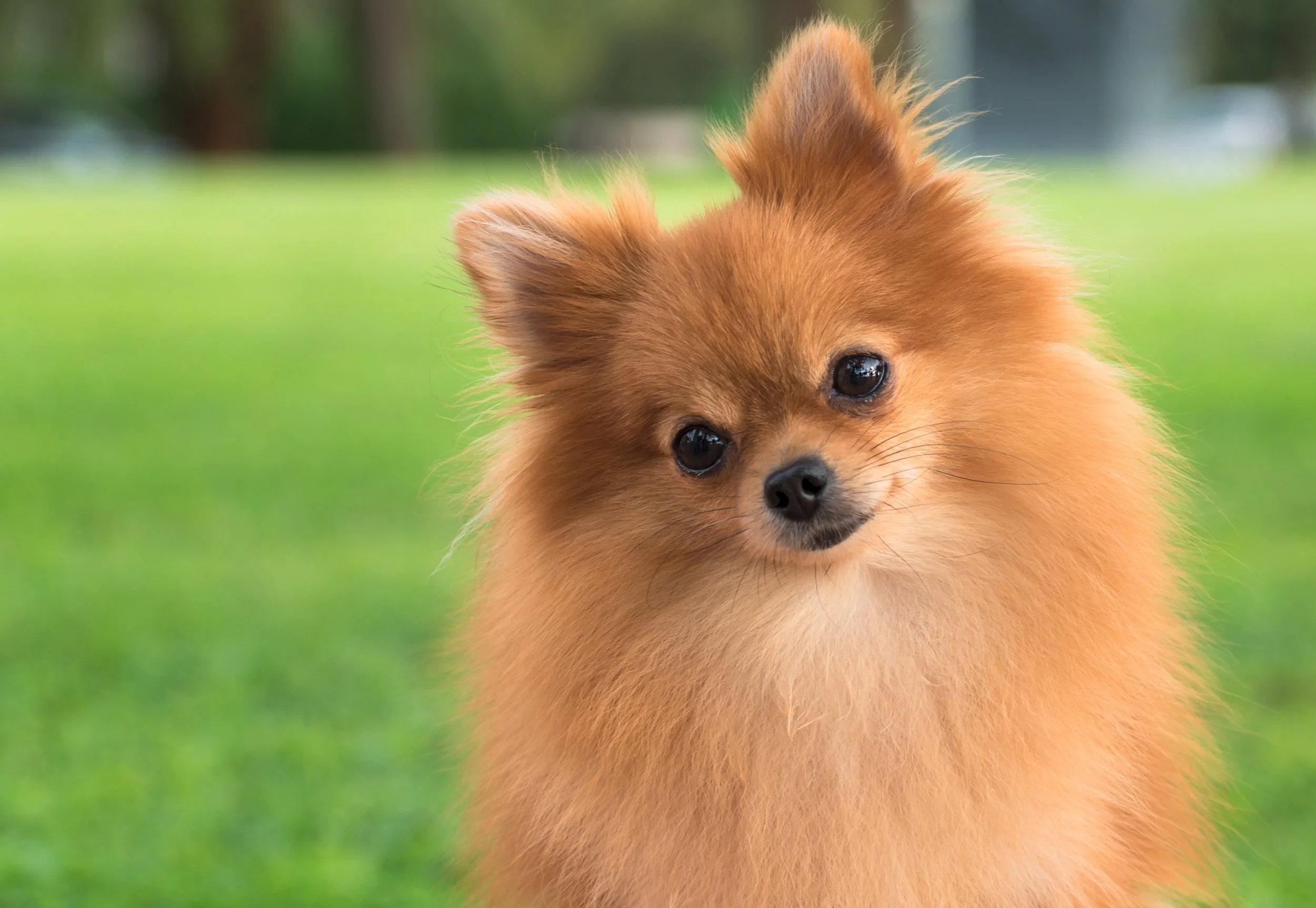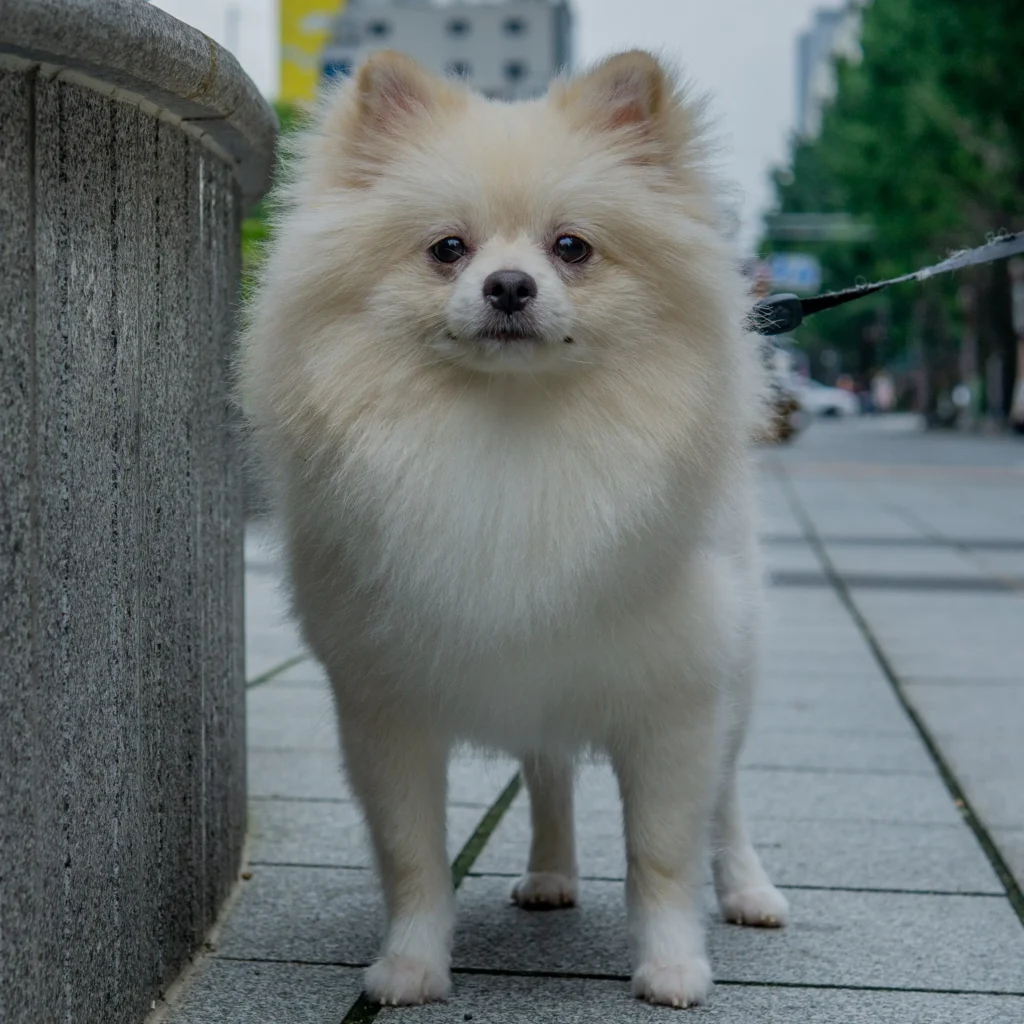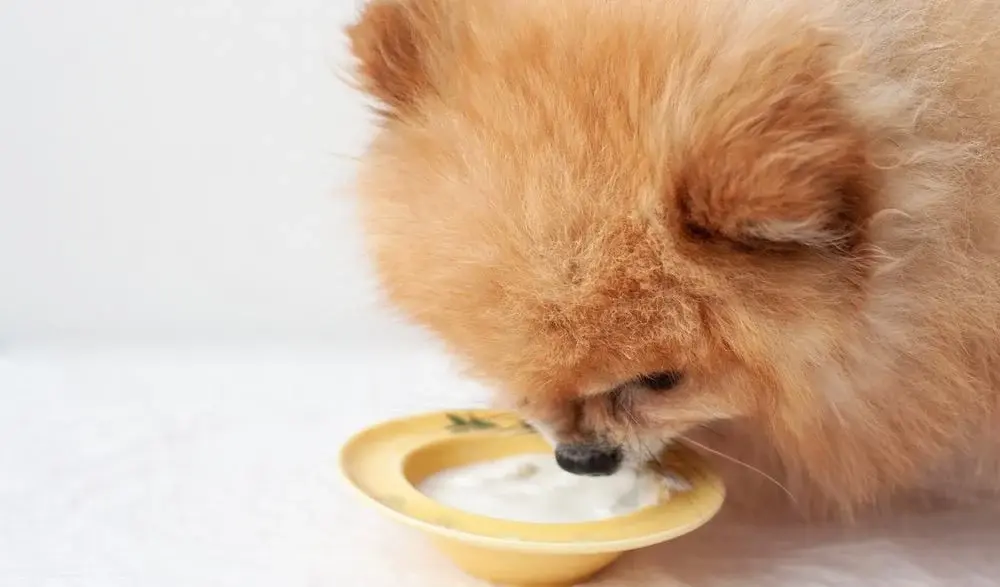History
The history of Pomeranian dogs is a fascinating journey through time, tracing their lineage and evolution from larger sled-pulling ancestors to the pint-sized, fluffy companions we adore today. Pomeranians, often referred to as “Poms,” belong to the Spitz family of dogs and originate from the Pomerania region, which stretches across parts of modern-day Poland and Germany.
The story of Pomeranian dogs can be divided into distinct historical periods. The breed’s ancestors were larger working dogs known for their strength and endurance, often employed in tasks like herding and pulling sleds. These dogs had a dense coat, which eventually contributed to the Pomeranian’s signature plush appearance.
In the 18th century, Pomeranians underwent a transformation. During the reign of Queen Victoria, who had a profound influence on dog breeding trends, the breed was selectively bred to be smaller. Queen Victoria’s own involvement in breeding Pomeranians significantly contributed to their reduced size and refined appearance. Her dedication to the breed led to the establishment of the smaller, more companionable Pomeranians that we are familiar with today.

The term “Pomeranian” itself is believed to have been derived from the Pomerania region, where these dogs were initially popular. Over time, these dogs gained favor across Europe, finding their way into the hearts of royalty and nobility. Pomeranian dogs were particularly popular in the royal courts of France, where they became known as “French Poodles.”
In the 19th century, the breed’s popularity continued to grow. The American Kennel Club recognized the Pomeranian as a breed in 1900. During this era, Pomeranians were bred for various coat colors, including orange, black, and cream. Their distinctive plume-like tails and vibrant personalities made them sought-after pets and show dogs.
World War II had a significant impact on Pomeranian history. Many European breeds faced challenges during the war, and Pomeranian dogs were no exception. The breed faced a decline in numbers, and efforts were made to rebuild their population after the war ended.
In the post-war years, Pomeranian dogs experienced a resurgence in popularity, especially in the United States. They became known for their role in circuses and as charming companions for celebrities. Their adorable appearance and lively personalities made them stars on screen and off.
Today, Pomeranian dogs continue to be cherished pets worldwide. They are known for their small size, fluffy double coats, and lively demeanor. These dogs are often seen in various colors, including orange, cream, black, blue, sable, and more.
The Pomeranian’s rich history is a testament to the breed’s adaptability and enduring appeal. From their roots as working dogs in Northern Europe to their evolution into beloved companions in the courts of royalty, Pomeranians have maintained their charm and charisma through the ages. Their history serves as a reminder of the remarkable journey that has led to the creation of one of the world’s most cherished toy breeds, the Pomeranian dog.
Pomeranian Dogs size
Pomeranian dogs are renowned for their diminutive size, which is one of their distinguishing characteristics. When discussing the size of Pomeranian dogs, it’s crucial to note that they are classified as a toy breed, and their size conforms to this category. Here are key points about the size of Pomeranian dogs:

Compact Frame: Their compact bodies are adorned with a profuse double coat, which adds to their charm and makes them appear even smaller.
Ideal Height: In terms of height, Pomeranians usually stand between 6 to 7 inches (15 to 18 centimeters) tall at the shoulder. This measurement reflects their small, yet robust, build.
Variability: While these measurements provide a general idea of the size of Pomeranian dogs, there can be slight variations among individual dogs. Some may be slightly larger or smaller than the average.
Puppy Size: Pomeranian puppies are incredibly tiny when they are born, often weighing just a few ounces. As they grow, they go through a period of rapid development before reaching their adult size.
Adaptability: Due to their small size, Pomeranians are adaptable and can thrive in various living environments, including apartments and houses with small yards.
Nutrition, Diet, and Exercise
Nutrition for Pomeranian Dogs

Proper nutrition is the foundation of a healthy and happy Pomeranian. These small dogs have specific dietary needs that should be met to maintain their energy levels and overall health.
1. High-Quality Dog Food
Start with a high-quality commercial dog food that is specifically formulated for small breeds like Pomeranians. Look for products that list meat as the primary ingredient, as this ensures they receive essential protein.
2. Protein and Fat
Pomeranians require a diet rich in protein and healthy fats. Protein supports muscle development, while fats provide a source of energy. Aim for a diet consisting of at least 18-22% protein and 5-8% fat.
3. Portion Control
Due to their small size, Pomeranians are prone to obesity. Carefully measure their food portions and avoid overfeeding. Consult with your veterinarian to determine the ideal portion size for your individual dog.
4. Fresh Water
Always provide fresh, clean water for your Pomeranian. Dehydration can lead to various health issues, so ensure their water bowl is filled throughout the day.
Dietary Considerations
In addition to these general guidelines, consider specific dietary requirements and potential allergies that your Pomeranian may have. Some dogs have sensitivities to certain ingredients, such as grains or chicken. If you notice any adverse reactions, consult your vet and explore alternative diet options. Establish a consistent feeding schedule for your Pomeranian. This helps with digestion and can make house training easier.
Exercise for Pomeranian Dogs
Pomeranians are energetic little pups, and regular exercise is crucial to keep them happy and healthy. Here’s how to provide the right amount of physical activity for your furry friend:
1. Daily Walks
Pomeranian dogs benefit from daily walks. Aim for at least two short walks each day, as this helps them burn off excess energy and maintain a healthy weight.

2. Playtime
Engage in interactive playtime with your Pomeranian. They enjoy games of fetch, tug-of-war, and interactive toys that challenge their minds.
3. Socialization
Pomeranian dogs are social dogs and enjoy the company of both humans and other dogs. Regular trips to the dog park or playdates with other well-behaved dogs can provide excellent exercise and socialization opportunities.
4. Mental Stimulation
Besides physical exercise, mental stimulation is essential for Pomeranians. Puzzle toys and training sessions can keep their minds active and prevent boredom.
Remember that the well-being of your Pomeranian depends on your commitment to their care. A well-balanced diet and an active lifestyle will keep them in the best possible shape and ensure that they thrive as part of your family.
Training and Intelligence
Pomeranian dogs are known for their fluffy coats, small size, and charming personalities. These pint-sized canines are not only adorable but also incredibly intelligent. In this comprehensive guide, we will delve into the world of Pomeranian dog training and explore the remarkable intelligence that these dogs possess.

Understanding Pomeranian Dogs
Before we dive into training techniques and intelligence, it’s essential to have a good understanding of the Pomeranian breed. Pomeranians belong to the toy group of dog breeds and are one of the smallest dog breeds in the world. They are known for their vivacious and extroverted personalities.
Temperament and Personality
Pomeranians are lively, alert, and often exhibit a fearless attitude. They are confident and social dogs, which makes them great companions for families and individuals alike. However, their spirited nature can sometimes lead to challenges in training.
Physical Characteristics
Pomeranians typically weigh between 3 to 7 pounds and stand about 7 to 12 inches tall at the shoulder. Their double coat, which comes in various colors, requires regular grooming to keep it healthy and beautiful.
Now that we’ve covered the basics let’s move on to the core of our discussion – training Pomeranian dogs.
Pomeranian Dog Training
Training a Pomeranian dog can be both rewarding and challenging due to their spirited personalities. To ensure a well-behaved and obedient Pomeranian, it’s crucial to employ effective training techniques.
1. Start Early: Early socialization and training are key. Begin training your Pomeranian puppy as soon as you bring them home. The earlier you start, the easier it will be to mold their behavior.
2. Positive Reinforcement: Pomeranian dogs respond well to positive reinforcement. Use treats, praise, and affection to reward good behavior. This breed thrives on positive feedback.

3. Consistency: Be consistent with your commands and expectations. Pomeranians can become confused if you use different commands for the same behavior. Establish clear, consistent cues for commands like sit, stay, and heel.
4. Patience: Be patient with your Pomeranian. They may have a stubborn streak, but harsh training methods will not yield the best results. Stay calm and composed during training sessions. for your Pomeranian to
5. Socialization: Expose your Pomeranian to various people, animals, and environments from a young age. Proper socialization helps prevent behavioral issues and makes your Pomeranian more adaptable.
6. Obedience Classes: Consider enrolling your Pomeranian in obedience classes. These classes can be highly beneficial for both training and socialization. They also provide an opportunity for your Pomeranian to interact with other dogs.
7. Exercise: Pomeranians have the energy to burn. Regular exercise is essential to keep them happy and prevent boredom-related behaviors. Short walks, playtime, and interactive toys can help keep them mentally stimulated.
8. Crate Training: Crate training can be useful for housebreaking and providing your Pomeranian with a safe space. Make the crate a positive place, and never use it for punishment.
The Intelligence of Pomeranian Dogs
Now, let’s explore the remarkable intelligence of Pomeranian dogs. While they may be small in size, they are big in brainpower.
1. Problem Solving: Pomeranians are natural problem solvers. They enjoy figuring out puzzles and finding solutions to challenges. Provide them with interactive toys and games to keep their minds engaged.

2. Quick Learners: Pomeranians are quick learners, which makes training easier when approached correctly. They pick up commands and tricks relatively fast, especially when rewarded for their efforts.
3. Adaptability: Despite their size, Pomeranians are adaptable dogs. They can thrive in various living situations, from apartments to houses with yards. Their intelligence helps them adjust to different environments.
4. Alertness: Pomeranians are highly alert and make excellent watchdogs. They have a keen sense of hearing and will alert you to any potential intruders or unusual sounds.
2. Quick Learners: Pomeranians are quick learners, which makes training easier when approached correctly. They pick up commands and tricks relatively fast, especially when rewarded for their efforts.
3. Adaptability: Despite their size, Pomeranians are adaptable dogs. They can thrive in various living situations, from apartments to houses with yards. Their intelligence helps them adjust to different environments.
4. Alertness: Pomeranians are highly alert and make excellent watchdogs. They have a keen sense of hearing and will alert you to any potential intruders or unusual sounds.
5. Emotional Intelligence: Pomeranians are also emotionally intelligent. They can sense their owner’s moods and respond with affection and support. This makes them wonderful companions for emotional well-being.
Health and Lifespan
Pomeranian Dogs Health Considerations
Pomeranians are generally hardy little dogs, but they are not without their specific health concerns. By being aware of these issues, you can take proactive steps to ensure your Pomeranian enjoys a long and healthy life.
Dental Health: Dental problems are common in Pomeranians due to their small mouths and crowded teeth. Regular dental care, including brushing their teeth and providing dental chews, can help prevent dental issues.

Luxating Patella: Pomeranian dogs are prone to luxating patellas, a condition where the kneecap dislocates. This can cause discomfort and limping. Surgery may be necessary in severe cases.
Tracheal Collapse: The Pom’s delicate trachea can be prone to collapsing, leading to coughing and breathing difficulties. Avoid using collars and opt for a harness to reduce strain on the throat.
Eye Problems: Pomeranians can be susceptible to various eye issues, including cataracts and progressive retinal atrophy (PRA). Regular eye check-ups with a veterinarian are crucial.
Skin Allergies: Some Pomeranians may develop skin allergies, resulting in itching and skin irritations. Identifying and eliminating allergens from their environment can help manage this.
Obesity: Pomeranian dogs are at risk of obesity, which can exacerbate other health problems. Monitor their diet and engage in regular exercise to keep them at a healthy weight.
Hypothyroidism: This hormonal disorder can affect Pomeranians, leading to symptoms like weight gain, lethargy, and skin issues. Medication can help manage this condition.
Pomeranian Dogs Lifespan
On average, Pomeranian dogs have a lifespan of 12 to 16 years. Proper care and attention to their health can significantly impact their longevity. Here are some tips to help your Pom live a full and happy life:
Nutrition: Feed your Pomeranian a balanced diet appropriate for their age and size. Consult with your veterinarian to determine the best food for your specific Pom.

Regular Exercise: Pomeranians are active dogs despite their small size. Daily walks and playtime are essential to keep them mentally and physically stimulated.
Veterinary Care: Regular check-ups with a veterinarian are crucial. Early detection of health issues can lead to more effective treatment.
Dental Care: As mentioned earlier, dental health is vital. Brush your Pom’s teeth regularly and schedule professional dental cleanings as needed.
Grooming: Pomeranian dogs have a thick double coat that requires regular grooming to prevent matting and reduce shedding. Brush their coat at least a few times a week.
Socialization: Pomeranians can be a bit wary of strangers if not properly socialized. Expose them to various people, animals, and environments from an early age to ensure they are well-adjusted.
Mental Stimulation: Keep your Pomeranian mentally active with toys and puzzles to prevent boredom, which can lead to behavioral issues.
Safety: Due to their small size, Pomeranians are at risk of injury from falls or being stepped on. Be mindful of their surroundings to keep them safe.
Stress Management: Pomeranians can be sensitive to stress. Provide a calm and secure environment to reduce anxiety.
In conclusion
Pomeranian dogs are delightful companions known for their loyalty and charm. To ensure they live a healthy and fulfilling life, it’s essential to be proactive in their care. Regular vet visits, a balanced diet, exercise, grooming, and attention to their specific health concerns will contribute to a longer and happier life for your beloved Pomeranian. With the right care, your Pomeranian can be your cherished companion for well over a decade, bringing joy and companionship to your life.
Remember that every Pomeranian is unique, so it’s important to tailor your care routine to their individual needs and consult with a veterinarian for personalized guidance on keeping your Pom in optimal health throughout their life.
Exploring Various Dog Breeds:



